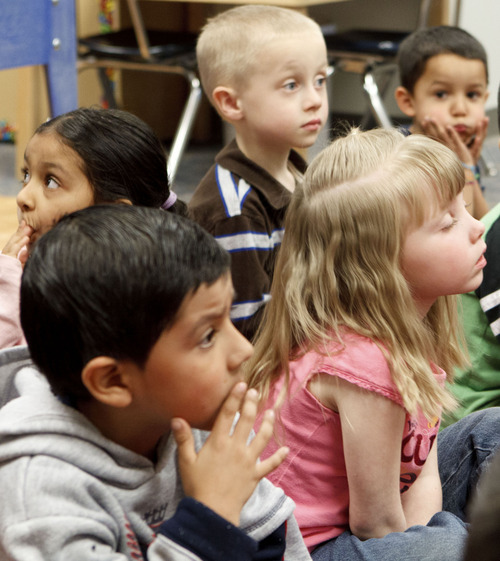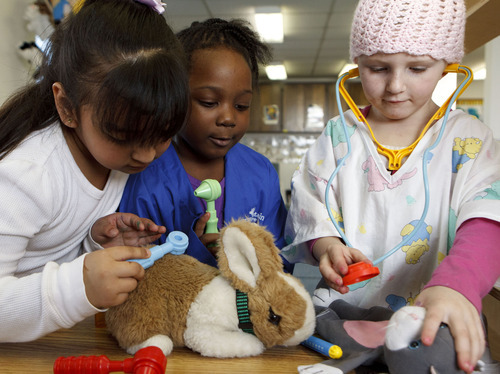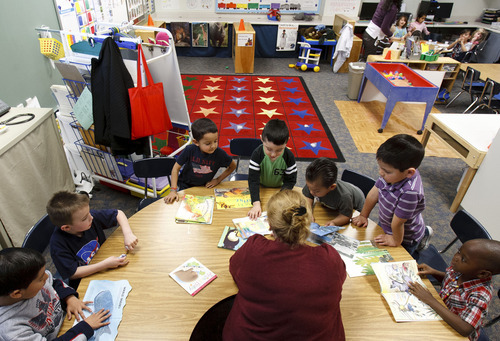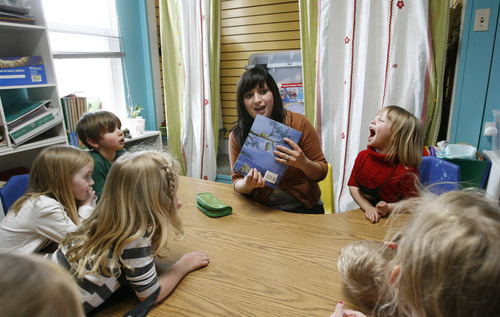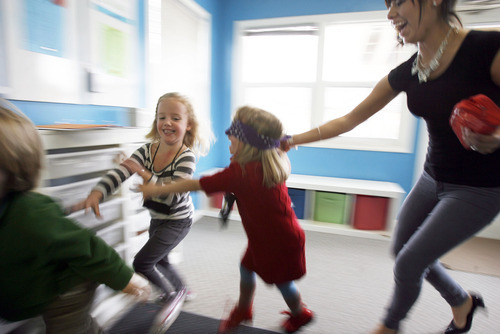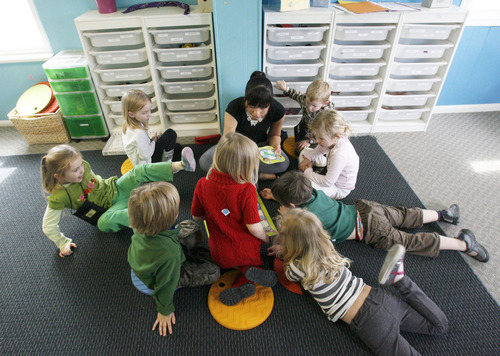This is an archived article that was published on sltrib.com in 2012, and information in the article may be outdated. It is provided only for personal research purposes and may not be reprinted.
Want your toddler to study modern dance? There's a preschool for that. How about learn Spanish, or celebrate the Jewish High Holy days? There are preschools for those, too.
Utah parents have a dizzying array of options for early childhood education, but what criteria should they use to choose?
"It will certainly vary depending on the needs of the family and what they are looking to achieve," said Janis Dubno, early childhood education policy analyst for Voices for Utah Children.
A high-quality preschool should offer several key components, whatever its curriculum may be, said Dubno, including ongoing training for teachers, strong support from its administration, a teacher-to-student ratio of no more than 1:10 and fewer than 20 students in a class. Schools also should have a research-based curriculum that prepares children for kindergarten and encourage family involvement.
Dubno recommends parents visit schools they are considering and compare curricula and program requirements before making a decision.
Accreditation or a state license also can be a good indicator, said Byran Korth, assistant professor of early childhood education at Brigham Young University. He recommends programs that have been accredited by the National Association for the Education of Young Children.
Non-accredited programs can still be good, Korth said, but having that stamp of approval means preschools have gone through a rigorous evaluation process and can help narrow the list for parents trying to choose just one. With only 10 percent of preschools going through the expensive certification process, parents can also use the guidelines to conduct their own evaluation.
A state license indicates that preschool providers have had background checks and safety screenings, Dubno said. Parents who choose programs in a neighbor's home need to be cautious, she said, because there can be sharp differences in quality and safety.
Schools with four or fewer unrelated children do not require a license, and parents will need to do their own investigation of the program.
Schools also should focus on involving parents in the educational process, added BYU's Korth, helping them to create learning opportunities at home. And, most importantly, the program should fit the family's schedule, values and financial needs.
For some parents, making the final selection rests more on people they trust than any guidelines. Hailey Wolfenbarger agonized 10 years ago over where to send her oldest son, Holden, and finally found a criteria that worked for her — recommendations from other parents.
"Picking a preschool was so much more overwhelming and stressful than elementary school," Wolfenbarger said. "I knew my kids would go to our neighborhood school, but I had no idea for preschool."
Holden and his brother McClain ended up in preschool at the Granite School District's Crestview Elementary, but their younger siblings made the switch to a private program when the school district eliminated Crestview's class for 3-year-olds. Wolfenbarger has sent two children to the private co-op school and plans to send her two youngest there as well.
Both programs have components that were important to Wolfenbarger, such as being close to home, being reasonably priced and offering social interaction as well as academics. But for her, a good recommendation from other parents was the best indicator of preschool performance.
"I remember thinking I would go to all these different schools and really do my homework," Wolfenbarger said. "But when it came down to it, I knew someone who went there who had a good experience."
—
Practical concerns • Some preschools can be a major investment of time and money. Three-year-olds at the McKee Spanish Immersion preschool attend three-hour classes, five days a week. That may seem intense, but it's necessary if children are going to be conversant in Spanish by the end of their first year, said school director Jared Hansen.
"We try to have them learn Spanish the same way they learned English, through play and interaction," Hansen said. "But that does take a lot of time."
And the cost associated with that time can add up. McKee's tuition, about $285 a month for the intense first year, is comparable to other programs that offer instruction four to five days a week.
Parents can expect to pay about $100 less for preschools that offer two to three classes each week, but some may not have to pay at all, said Brenda Van Gorder, director of Granite School District's preschool program.
The district operates free preschools in schools that receive federal Title I funding for low-income youngsters, which are open to 3- and 4-year-olds who live within the school boundaries. But the preschool program, which focuses on kindergarten readiness, is also available in non-Title 1 schools on a sliding fee scale, so parents can pay what they can afford. The goal, Van Gorder said, is ensuring that every child has an opportunity to attend.
"We're really trying to make it be a representation of what is going on in our district," said Van Gorder, adding that preschool is particularly important for low-income children, who are at high risk for academic failure.
For parents who want to help kids at home, the State Office of Education offers a free online program called Upstart that is intended to give at-risk kids an early academic boost.
The state office is also working to adopt new standards for kindergarten readiness. The standards should come before the State School Board in the next few months, said Tiffany Hall, of the state office. Public schools will have to comply with the new standards, Hall said, but many private schools will choose to do so as well to ensure their students are ready to start school.
"The kindergarten curriculum is the same for everybody," points out policy analyst Dubno. "Regardless if a child is going to a private school or a public school, they have to be ready and up to those standards."
kdrake@sltrib.com Twitter: @Katie_Drake —
Components of a quality preschool
Here are a few key components for a high-quality preschool:
Meets standards for kindergarten preparedness
Ongoing professional development for staff
Teachers have at least an associate's degree in child development
Strong emphasis on family involvement
Teacher-to-student ratio of no more than 1:10
Class sizes of no more than 20 children
Source • Voices for Utah Children




